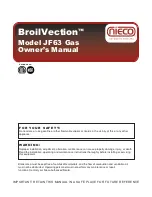
32
Instructions on commissioning, maintenance, and troubleshooting for auroSTOR 0020111119_02
>
Mount the discharge pipe of the expansion relief valve
with a constant slope to the outside. The discharge pipe
must finish at a safe and visible point where there is no
danger of it freezing up and where it poses no risk of
injury to persons.
>
Actuate the expansion relief valve regularly to prevent
calcification.
>
Connect the cylinder to the cylinder connection (
4
).
>
For the pipe from the main stop valve of the building to
the cylinder, use copper piping with a diameter of at
least 22 mm to ensure that the cylinder is as efficient as
possible. This is particularly important for installations
with a pressure-controlled cold water inlet (
3
).
>
Mount the safety assembly in the cold mains inlet
on the cylinder.
>
If necessary, establish the connection to the cold water
inlet (
3
) with pressure compensation of the safety
assembly.
>
Depending on the fittings used and the type of the draw-
off points, it may be necessary to install a backflow pre-
venter in the pressure-controlled cold water inlet.
i
If you mount the safety assembly above the cyl-
inder, you do not need to drain the cylinder in
order to maintain the safety assembly. Make
sure there is sufficient space for maintenance
and connection of the discharge pipe of the
expansion relief valve.
When the discharge pipes are connected, the expansion
relief valve may not be more than 600 mm away from
the temperature and pressure relief valve (¬
fig. 6.9
).
6.6.3 Mounting the expansion vessel
The Vaillant solar cylinder is delivered with an external
expansion vessel (ADG).
Connect this expansion vessel to the installed safety
assembly as follows:
>
Screw the expansion vessel directly to the safety assem-
bly via the provided connection (
5
) or
>
Connect the expansion vessel with the safety assembly
via a copper pipe or suitable hose line. Make sure the
expansion vessel is supported sufficiently.
>
Use the supplied wall bracket if you want to mount the
expansion vessel to a wall.
i
In regions with high water pressure (4 bar or
more), you can also connect the mixer tap for a
bath or shower to the cold water inlet with pres-
sure compensation (3) of the safety assembly.
This ensures that the hot and cold water supply
to the mixer tap have the same pressure. You
should install the cold water supply for all other
connections using a T-piece before the safety
assembly in the cold mains inlet to the cylinder.
6.6.4 Mounting the drain valve
>
Mount a drain valve as low as possible between the cylin-
der and the safety assembly in the cold mains inlet (
10
¬
Fig. 4.1
).
The drain valve must be provided by the customer.
We recommend mounting a hose which reaches about
1 m under the base of the cylinder to the outlet of the
drain valve.
6.6.5 Laying the pipes to the tundish
>
Connect the temperature and pressure relief valve and
the expansion relief valve to the tundish using
15 mm piping.
>
Lay the tundish discharge pipe (
¬
section 6.7
).
i
The tundish discharge pipes must be laid at a
sufficient distance from electrical components in
accordance with valid building regulations.
6.7
Installation of discharge pipe
6.7.1
Design of discharge pipe
a
Danger!
Risk of burns and scalds resulting from
escaping hot water!
In the event of a fault, hot water can escape
suddenly from the discharge pipe of the
expansion relief valve.
>
Lay the discharge pipe so that it ends at
an easily visible point inside or outside
the building where escaping hot water
does not pose a risk to persons.
6 Installation
















































